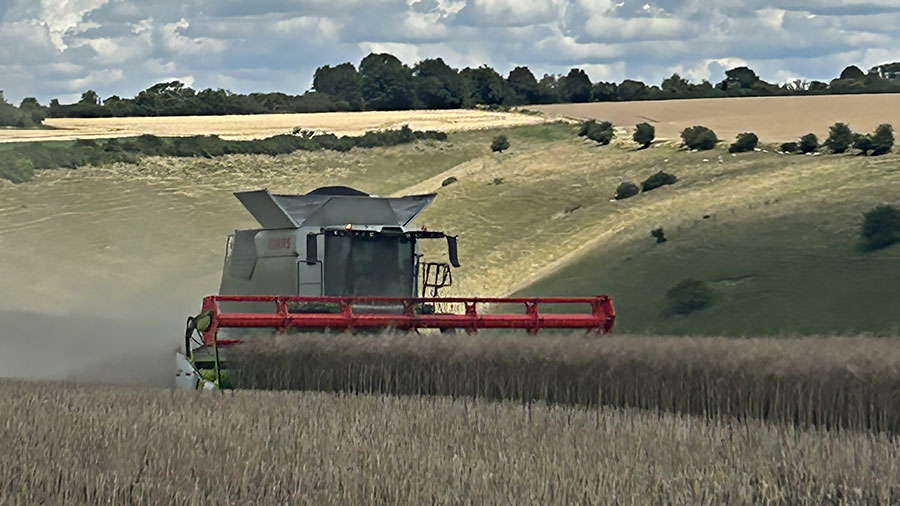Harvest 2023: Only 21% of oilseed rape cut and with poor yields
 Cutting Aurelia OSR at Chalk Pyt Farm, Broad Chalke, Wiltshire © Ben Jeans (Harvest 2023 gallery)
Cutting Aurelia OSR at Chalk Pyt Farm, Broad Chalke, Wiltshire © Ben Jeans (Harvest 2023 gallery) The pain continues for oilseed rape growers with only 21% of the rapeseed area cut by 25 July and yields averaging a poor 3t/ha, according to the first AHDB harvest report.
Progress is far behind where it was at the same time last year, when 68% had been harvested.
See also: Essex farm uses borage and herbage seed to fight blackgrass
It is also behind the five-year average (37% complete), but ahead of 2021 when just 9% of the OSR area had been cut.
The South West and the West Midlands are the furthest ahead, at 61% and 35% complete respectively. Harvesting is 32% complete in the South East.
However, in Scotland, Wales, and the North East of England, harvest was only just starting or not yet under way.
Yields so far are variable, ranging from 1.0-4.9 t/ha. Generally, yields are poor, averaging 3.0 t/ha.
These lower yields have largely been a result of storm damage (which caused heavy shedding), as well as pest and frost damage earlier in the season.
The East Midlands and Eastern region in particular have reported cabbage stem flea beetle damage across the region, also compromising yields.
Winter barley
For winter barley, 48% of the English, Welsh and Scottish winter barley harvest is complete, but with wide variation from 1% complete in the North East to 83% complete in the South West.
As could be expected, harvest is far behind the same point last year when dry and hot weather saw the GB winter barley harvest reach 93% complete by week three.
It is also behind the five-year average of 56% compete, but similar to the progress in 2021.
There has been significant variation in reports of drying requirements, ranging from 10% to 100%.
This has varied both between and within each region, because of varying rainfall and the timing of harvest.
Early indications are good, with yields trending slightly above the five-year average, ranging from 5.0-11.0 t/ha.
Better yields have been reported on heavier land, whereas lighter soils suffered more from water stress during grain fill.
Generally, southern areas of England have reported above average yields. The Midlands are currently reporting average or just below average yields.
The report was produced by AHDB with data collected by Adas

